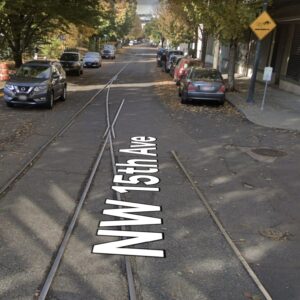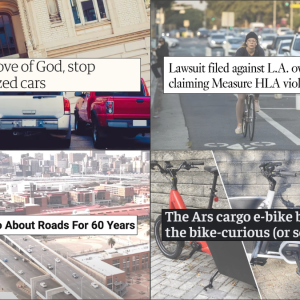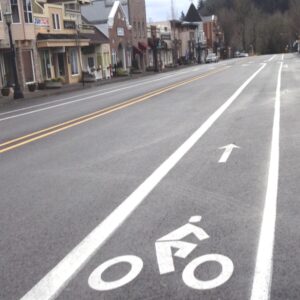This Associated Press story (which I found via BikeHugger on Twitter) from Seattle got my attention for a variety of reasons (which should become apparent after reading the excerpts below)…
WSDOT to pay $8 million over Montlake Bridge bike accident
The state Transportation Department has agreed to pay $8 million to a bicyclist who was paralyzed after his tire got caught in a gap between two steel grates on the Montlake Bridge.… Gendler sued over the design of the bridge, citing a gap between two steel panels on the bridge deck. At a half-inch, it was wider than his bike tire. The lawsuit uncovered another accident eight years earlier involving a bicyclist that resulted in less serious injuries.
… The gap was similar in size to the flange gap in light rail or streetcar tracks, Milton said.
Officials also assumed it wouldn’t be a problem since most bicyclists use the sidewalk or the right lane when crossing the bridge, Milton said.
Cyclists are legally entitled to travel in the bridge lanes unless a sign prohibits them, Kessler said.
WSDOT has since filled the gap with an epoxy to prevent more accidents, Milton said…”
Portland has a lot of gaps in the road — and lots of streetcar and light rail tracks — that are more than 1/2-inch wide.






Thanks for reading.
BikePortland has served this community with independent community journalism since 2005. We rely on subscriptions from readers like you to survive. Your financial support is vital in keeping this valuable resource alive and well.
Please subscribe today to strengthen and expand our work.
The difference with train tracks is the gap is a known, common sense hazard visible in advance, and further, such a gap cannot be avoided with any practical engineering design (I assume).
Gaps where one does not expect them are the ones that indicate negligence and are therefore potentially lawsuit worthy.
I am a bit confused at the article’s iformation…a half and inch equals about 12.7 mm. So this is narrower than a the typical retail tire of 21mm. (Or am I doing my math wrong?) This is not to say that an inflated 21mm tire cannot squeeze into such a gap if its pressure where low, wet bridge, etc.
For safer street riding in the city …one needs a minimum of 28mm or better yet 32mm around tracks and gaps.